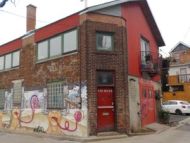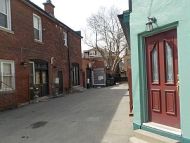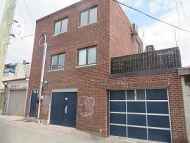
Centre For Local Research into Public Space (CELOS)
Laneway Houses

put the coffee on
Laneway houses were explicitly enabled by the Ontario Government in 2003. The City of Toronto passed a laneway suites bylaw in June 2018.
When the bylaw was passed, it seemed like here was the key to letting older people "age-in-place," letting families support relatives with special needs, allowing adult children to continue living in their neighbourhoods even though houses have become unaffordable for many.
BUT in 2020 most people wanting a laneway house find they're ineligible.
It's time to take the conversation back into the neighbourhoods.
Gentrification?
The "buzz" is that laneway houses are just another piece of gentrification. Certainly there's lots of talk about building little designer houses and adding even more resale value to properties that have them. But existing laneway houses mostly look like pretty modest rental accomodation.
Random photos of laneway houses (mainly unofficial ones):

at intersection of two laneways

used to be a stable, now apartments

looks official
Latest news
Sept.29, Oct.1, 2020
Sept.29, an emailed letter went to each city councillor, the mayor, and the heads of the relevant city departments. It gave some reasons why City council should send the Sept.22 report back to the committee. But on Oct.1, the report passed with no discussion Read more
Sept.22, 2020
Meeting of the Planning and Housing Committee
Question: What's blocking permit approval?
Answer: Is it Toronto Fire Services? Or Toronto Buildings? The story up to now
Quick Facts
- TFS says they need 1 meter between houses to get to a laneway house fire. But if a garage is on fire, they can get there through the main house doorways. Fact: Doorways downtown are mostly 84 cm wide. Not 1 meter.
- TFS says they can't go through houses to the laneway fire because there are too many lawsuits about damage if they go through houses. Fact: From 2011 to 2018, there were only 44 claims against TFS for such damages. Total cost: $42,164.
- TFS says that they need to protect us from ourselves -- we are not allowed to choose to live in a laneway house because we could die in a fire. Fact: "The....total fires reported have been decreasing, even as the number of population and structures have been increasing. This does not reflect decreased reporting." Of the fire deaths analyzed in the 2013 Service Efficiency Review of TFS, only one of the 39 people who died was in a building constructed more recently than 2003.
- TFS says that laneways cannot be used as emergency access. Fact: TFS told the Laneway Project staff that they can't put seating areas in a laneway during an event because laneways are emergency routes.
- TFS say that laneways are too narrow for fire access. Fact: Fire trucks are 2.9 meters wide. Laneways are wider. Fact: Fire trucks can take a test run down laneways (and they have, with no problem, even if they have to back out after).
- TFS says that laneways often have illegally parked cars, making it tricky for firetrucks to get by. Fact: so do narrow one-way downtown streets. Both obstructions can legally be ticketed and bring in extra ticket income for the city.
- TFS says that laneways are not plowed after a snow storm. Fact: The city can plow laneways that have houses on them.
- TFS has a $761,000 contract to buy new mattresses for firefighters over the next three years, so they can sleep better during night shifts. Fact: We want the firefighters to be fresh when they get a call. The city can spend an equal amount to plow laneways after a storm, so that people can sleep well in laneway houses also.
The alternative is condos and apartment towers. Here's a MAP of the region around the CELOS office, showing how many such large housing projects are underway nearby. They are mainly on arterial roads. The houses on the side streets often have a lot of extra space that could be filled in with smaller-scale housing.
Question: how many laneway permits have been issued?
Toronto Star, March 19, 2019: 78 sites in the permit process, 6 permits issued.
Buildings information, June 13, 2019: 12 building permits issued and 25 additional building permit applications are in the review process.
Sept.27, 2019, from Greg Whitfield (Toronto Buildings): approximately 20 permits issued.
December 20, 2019: FOI Response (dated Jan.24, 2020): 33 permits issued between Aug.1, 2018 and Dec.20, 2019, 11 permits pending as of December 20, 2019
CBC story, Jan,14, 2020: 52 permits issued, 50 more in the queue
September 2020: The original Council requirement called for a review of the June 2018 laneway suites bylaw either when 100 permits had been issued or at the 2 year mark, whichever is sooner. The September report said that only 88 permits have been issued in the last two years, with another 24 applications under review. Not very impressive.
Some context: the same report said that “approximately 47,000 residential lots in the City of Toronto abut a public laneway and are zoned to permit a Laneway Suite.” According to Statistics Canada, during that same time period, between 1500 and 2700 residential building permits a month were issued in Toronto.
Resources
media
Freedom of Information
notebooks (including correspondence)
Laneway house coffee conversations
Contact list (password needed)
Back to front page



 Show search options
Show search options





 You are on the [Laneway House] page of folder [Neighbourhoods]
You are on the [Laneway House] page of folder [Neighbourhoods] For the cover page of this folder go to the
For the cover page of this folder go to the